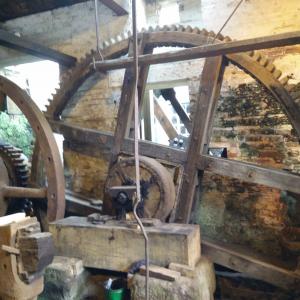
Over time the masonry used to create the dam has eroded which has allowed significant amounts of water to seep through to the embankment which backs onto a wall of the museum. Despite regular maintenance of the dam, a solution was required to stop the water permeating through the embankment and into part of the museum structure. The local council approached Uretek to see if it was possible to overcome the problems using a form of water sealing through resin injection.
This project involved a number of factors that made it difficult. Crucially it wasn’t clear where exactly the large proportion of water was escaping the dam. It had been drained to undergo repair works, but not to the required depth to establish the key problem areas. Consequently Uretek proposed a solution that would involve treating the length of the dam where the embankment backs on to the museum and creating a seal that would redirect water away from the wall.

Following the test phase a full treatment was initiated. Expansive geopolymer resin was injected through the top of the embankment at 1 metre intervals to form the protective barrier. The project required the technical teams to inject resins at depths of 1,3 and 5 metres to ensure the embankment was sealed. This would take the pressure off the 14th century structure and reduce the water seepage into the museum.
The initial treatment was successful in reducing the amount of water permeating through the embankment by 80% and Uretek are now completing additional injections at specified areas where small amounts of water are still evident.
Uretek’s solution was the only viable answer to save the museum. The alternative being a full dam drain and rebuild, which required unimaginable cost. Uretek was able to safely monitor the amount of resin injected to ensure it did not compromise the structure, yet still form the complete barrier.